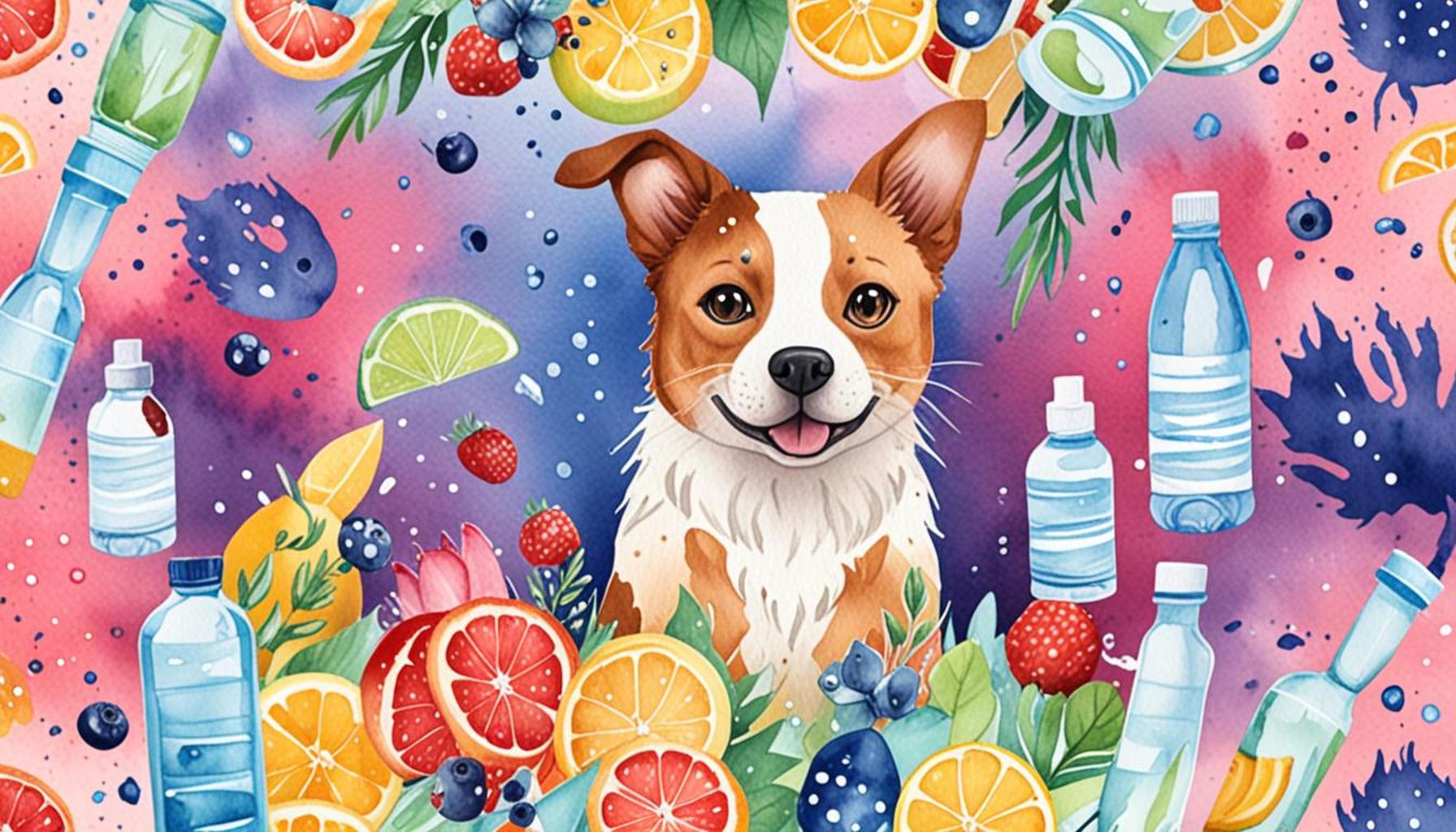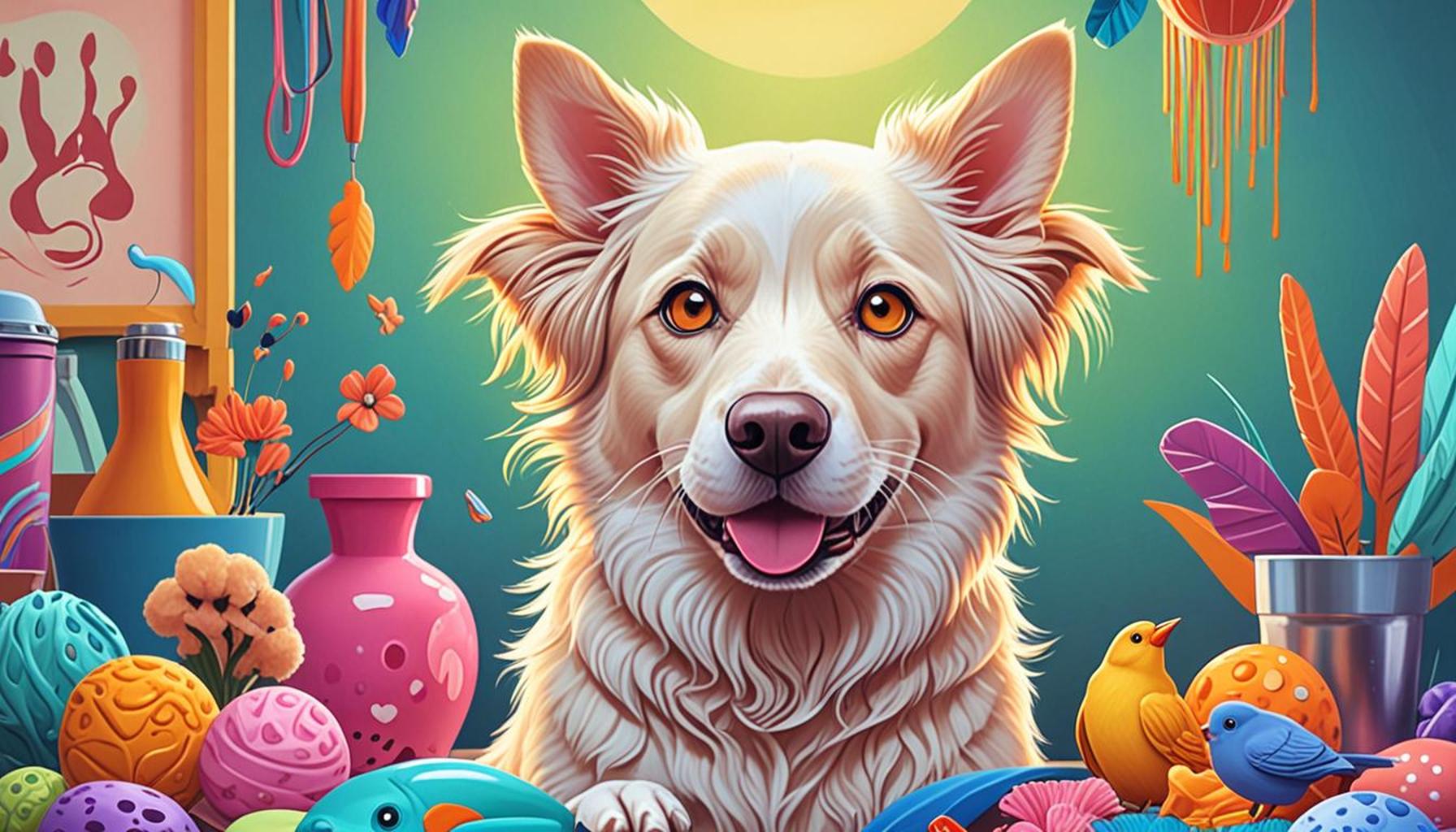Tips for Keeping Your Pets Properly Hydrated

Understanding the Importance of Hydration for Your Pets
As responsible pet owners, one of our foremost duties is to ensure that our furry companions stay hydrated. Just like us, pets require adequate water intake to maintain essential bodily functions, ward off dehydration, and support their overall vitality. Hydration plays a critical role in various aspects of a pet’s health, which goes beyond just quenching their thirst. Understanding why hydration matters can transform the way we care for our beloved pets.
Consider the following reasons why proper hydration is crucial:
- Temperature Regulation: Animals, much like humans, lose water through various means such as panting and even sweating, especially in a hot climate. In regions such as the southern United States, where temperatures can soar, keeping your pet hydrated is not just advisable—it’s essential. Dehydrated animals can suffer from heat exhaustion, leading to serious health complications.
- Digestive Health: Water plays a vital role in aiding digestion and nutrient absorption in pets. A sufficient intake of water helps to keep the gastrointestinal tract functioning smoothly, preventing issues like constipation or more severe gastrointestinal problems. For instance, pets on a dry kibble diet often need additional water to digest their meals properly.
- Joint Health: Well-hydrated joints are crucial for your pet’s mobility. Proper hydration can help lubricate joints, reducing discomfort and the risk of conditions like arthritis, especially in older pets. This is particularly important for larger breeds, such as Golden Retrievers or Labradors, which are prone to joint issues as they age.
It’s worth noting that the hydration needs of pets can vary significantly based on several factors:
- Breed: Certain breeds have unique characteristics that might influence their water requirements. For example, active breeds like Border Collies typically need more water than couch-potato breeds like Bulldogs.
- Age: Younger pets, such as puppies and kittens, often need more water relative to their size compared to adult animals. Their growing bodies require fuel for rapid development, which is why they may seem to drink more.
- Diet: The type of food your pet consumes also influences their hydration needs. Pets that eat dry kibble require more water intake than those who eat wet or canned food, which already contains moisture.
Recognizing these dynamics is crucial in proactively ensuring that your pets remain properly hydrated. Effective strategies to encourage hydration include providing fresh and clean water accessible at all times, considering water fountains that can entice pets to drink more, and even incorporating water-rich treats such as cucumbers or watermelon slices into their diet.
Instilling good hydration habits in your pets can lead to a longer, healthier life. Stay tuned as we delve deeper into additional tips and techniques that will empower you to ensure your cherished animals are not just well-fed, but also well-hydrated!

DISCOVER MORE: Click here to learn about how age affects pet nutrition
Practical Tips for Ensuring Your Pets Stay Hydrated
While understanding the importance of hydration is a significant first step, implementing effective strategies is crucial to keeping your pets properly hydrated. Here are some practical tips that every pet owner in the United States can incorporate into their daily routines to ensure the well-being of their furry friends:
- Fresh Water Always Available: Ensure that your pets have access to fresh and clean water at all times. It’s essential to replace the water daily to prevent any contamination, which could deter pets from drinking. Not only should the water be fresh, but the bowls should also be cleaned regularly to avoid any buildup of bacteria.
- Invest in Pet Water Fountains: Many pets are more inclined to drink moving water rather than still water. Investing in a pet water fountain can encourage your animals to hydrate more frequently. The constant filtration keeps the water clear while also providing a fresh taste that pets find appealing.
- Monitor Water Intake: Keeping an eye on how much water your pets are drinking daily is vital. Each pet has its own hydration needs based on activity level, size, and age. Understanding what is normal for your pet can allow you to notice any unusual changes in their drinking habits, which may indicate health issues.
- Enhance Water with Flavor: If you have a pet that is reluctant to drink water, consider adding a little flavor to it. Adding a splash of low-sodium broth or making ice cubes from chicken broth can make water more enticing, encouraging them to drink more.
- Should-Water Be at Serving Time? Pay close attention to your pet’s feeding schedule. Providing water soon after meals or incorporating water into their food can heighten their water intake. Mixing some water into their dry kibble or offering wet food can significantly increase hydration levels, especially for pets that may not drink enough on their own.
Utilizing these strategies can make significant strides toward ensuring your pets remain well-hydrated, especially during warmer months. Hydration needs can fluctuate based on the weather, so pet owners in warmer states should be particularly vigilant as temperatures rise.
In addition to the above tips, it’s important to educate yourself about pets’ behavioral signs of dehydration. Look for symptoms such as lethargy, dry gums, or loss of skin elasticity. Recognizing these signs can prompt immediate action to rectify the situation.
Maintaining awareness of your pet’s drinking habits not only contributes to their immediate health but also enhances their overall quality of life. The next section will explore how to identify and respond to signs of dehydration in your pets, which is vital for thrusting their hydration management to the next level.
| Hydration Tips | Importance |
|---|---|
| Provide Fresh Water Daily | Encourages drinking and helps avoid dehydration. |
| Use Pet Water Fountains | Maintains water freshness and stimulates pets to drink more. |
| Add Water to Food | Enhances moisture intake for those who eat dry kibble. |
| Monitor Weather Conditions | Informs hydration needs during heat or exercise. |
| Utilize Ice Cubes | Creates a fun way to keep pets cool and hydrated. |
Ensuring that your pet remains properly hydrated is crucial for their overall health. Drinking sufficient water helps in maintaining kidney function, regulating body temperature, and aiding digestion. Among the various strategies, providing fresh water daily is fundamental as it encourages habitual drinking and avoids dehydration. Incorporating pet water fountains can be particularly effective in keeping the water clean and inviting, while food enhancement with additional water can significantly contribute to hydration, especially for those on dry kibble diets. Monitoring weather conditions is another essential aspect of pet hydration, as increased temperatures and physical activity can greatly increase your pet’s water requirements. On hot days, offering ice cubes can also provide hydration while simultaneously cooling your pet. With these tips, you can ensure that your furry friends remain happy and healthy.
DISCOVER MORE: Click here to find the perfect pet for your lifestyle
Recognizing Signs of Dehydration in Your Pets
While proactively ensuring your pets stay hydrated is essential, becoming adept at recognizing the signs of dehydration is equally crucial. Dehydration in pets can lead to serious health complications, so being informed and vigilant can save your furry friend’s life. Understanding the behavioral and physical signs of dehydration can empower you to take swift action.
- Lethargy: One of the most common signs of dehydration is a noticeable decrease in energy. If your pet displays unusual sluggishness or shows disinterest in play or regular activities, it may be a signal that they are not properly hydrated.
- Dry Gums and Nose: Healthy pets typically have moist, cool gums and noses. If you notice that your pet’s gums appear dry, sticky, or even cracked, this could indicate dehydration. Similarly, a warm, dry nose may suggest that your pet is dehydrated and in need of fluids.
- Loss of Skin Elasticity: A simple test to determine hydration levels is the skin pinch test. Gently pinch the skin on the back of your pet’s neck and release it. If the skin does not snap back quickly to its original position, it may indicate dehydration. In a well-hydrated pet, the skin will return promptly, while in a dehydrated pet, it will remain elevated for a longer duration.
- Changes in Urination: Pay attention to the frequency and quantity of your pet’s urination. A significant decrease in urination or the presence of dark yellow urine can signal that your pet needs fluids. Pets should produce urine that is light in color, similar to lemonade.
- Vomiting or Diarrhea: If your pet is experiencing vomiting or diarrhea, it can lead to a rapid loss of fluids and quickly result in dehydration. In such cases, it is imperative to ensure they have access to water and consult your veterinarian for further guidance.
In addition to recognizing physical symptoms, being aware of environmental factors is also critical. During the summer months, pets are at a higher risk of dehydration, especially if they are active outdoors. According to the American Veterinary Medical Association, pets can suffer from heatstroke in just 15 minutes if left in a hot environment without access to water. Therefore, ensure they have shaded areas and fresh water when enjoying outside time.
Special considerations should also be made for certain pets. For example, older dogs, puppies, and pets with certain medical conditions may require more attention regarding hydration. If your pet falls into these categories, it’s wise to consult with your veterinarian for specific hydration recommendations tailored to their needs.
By staying alert to signs of dehydration and the unique circumstances surrounding your pet’s hydration, you can take proactive steps to prevent health issues. These efforts are not only vital for their physical well-being but also contribute to a happier, more active lifestyle for your beloved companion. In the subsequent section, we will delve into creative ways to encourage hydration by incorporating hydration practices into your pet’s daily regimen.
DON’T MISS: Click here to learn how social media can help save animals
Concluding Thoughts on Keeping Your Pets Properly Hydrated
In conclusion, ensuring your pet stays properly hydrated is a vital aspect of responsible pet ownership that significantly impacts their overall health and happiness. By understanding the importance of hydration and recognizing the various signs of dehydration, you can play an essential role in preventing health problems that could arise from inadequate fluid intake.
Implementing simple strategies, such as providing fresh, clean water at all times, encouraging water consumption during hot weather, and monitoring their fluid intake, can make a vast difference in your pet’s well-being. Taking advantage of creative solutions, such as incorporating high-water-content foods or using pet-friendly water fountains, can further engage your beloved companion in maintaining adequate hydration levels.
It is equally important to consider that various factors, such as age, activity level, and underlying health conditions, can influence your pet’s hydration needs. Frequent consultations with your veterinarian can help tailor a hydration plan that suits your pet’s specific circumstances. Moreover, pet parents should recognize the critical environmental factors that may elevate hydration risks, particularly during scorching summer months.
Ultimately, a proactive approach towards hydration not only promotes a healthier lifestyle for your pets but also fosters a stronger bond between you and your furry friends. By implementing these tips and remaining vigilant, you can ensure your pet thrives, leading to many joyful moments and adventures together.


